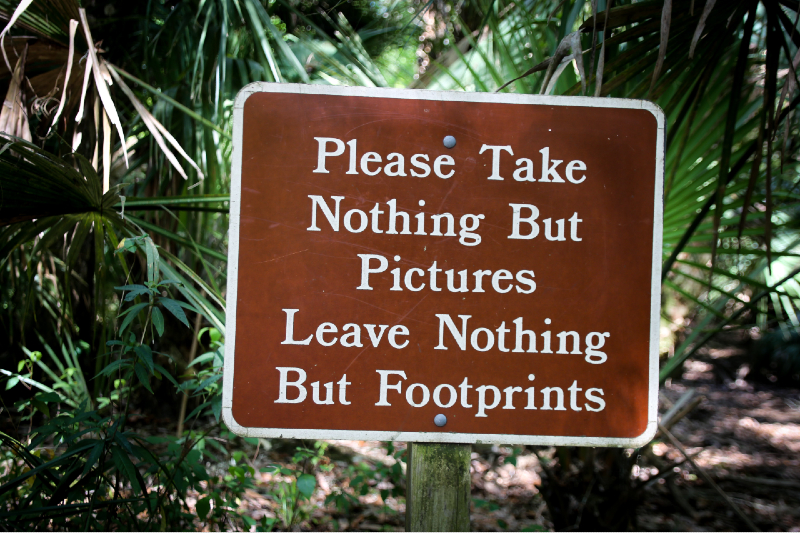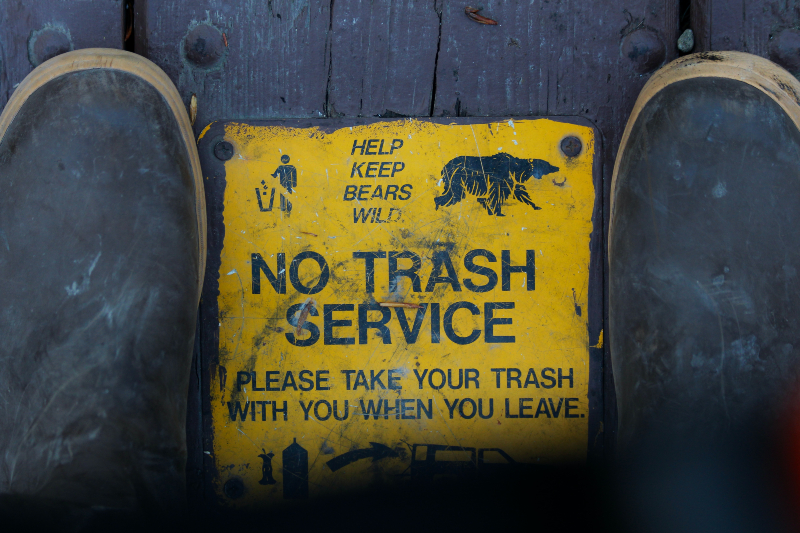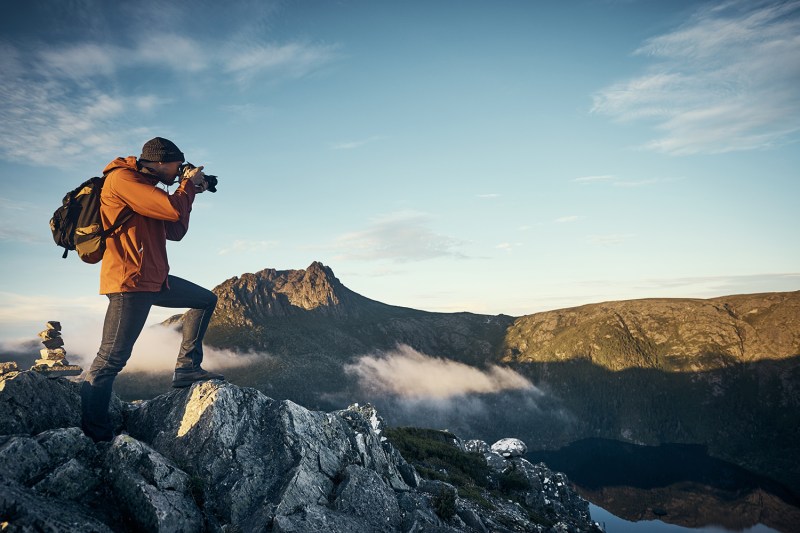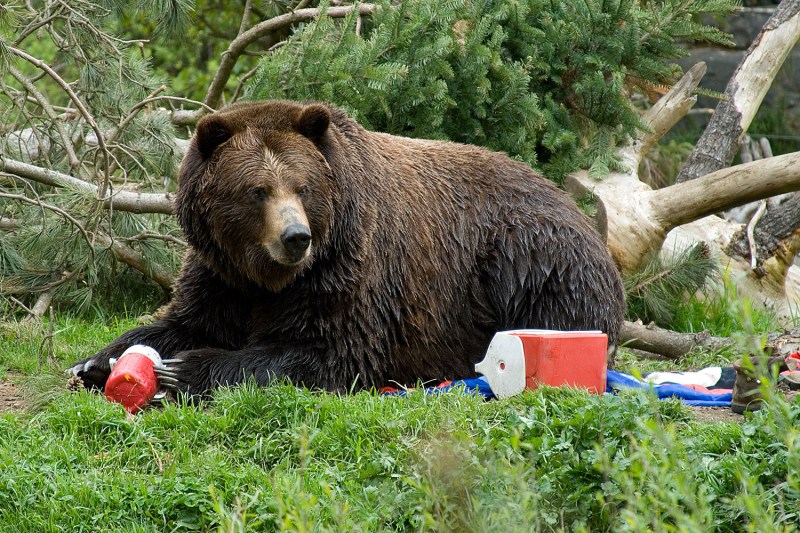The pandemic has served as a catalyst to get more people outside. Many of us have now taken up hiking, biking, dispersed camping, fly fishing, and more. And for good reason. The outdoors offer an opportunity to find solitude and beauty, to challenge ourselves physically, and to spend quality time with friends and family away from the noise of everyday life. But this influx in outdoor activity comes with increased impact on the trails, rivers, and mountains we love.
Everyone recreating outdoors should be familiar with the Leave No Trace Principles. We’re going to walk through the different principles and how to implement them on your next adventure so that the wilderness we love will be around for generations to come.
Related Reading
- U.S. National Parks Are Being Overrun: How Rangers Are Facing It
- Best Recyclable Dishware for Camping
Plan Ahead and Prepare/Travel and Camp on Durable Surfaces

The first principles of Leave No Trace are: Plan Ahead and Prepare, and Travel and Camp on Durable Surfaces. The best way to check off both of these boxes is to plan out your route, whether it’s a trail run, day hike, or multi-day backpacking trip and bring the emergency essentials. There are plenty of online resources and GPS apps (such as Gaia and All Trails) that work well. But a proper paper map is also a great item to bring along on your trip. Cell phones can die, get wet and shut off, or lose service, meaning your online map might not be accessible. Take some time to learn the basics of navigating with a map and compass to avoid getting lost.
If you’re off trail it means you’re treading on natural plants and shrubs and degrading wildlife habitat. Camping on designated surfaces means either camping at official campsites or camping where others have camped before. Look for fire pits, cleared platforms, and appropriate signage that the area allows camping.
If you’d like to buy a map we suggest Green Trails or National Geographic.
Dispose of Waste Properly

The next Leave no Trace principle is to Dispose of Waste Properly. As the Leave no Trace organization states, “Proper disposal of human waste is important to avoid pollution of water sources, avoid the negative implications of someone else finding it, minimize the possibility of spreading disease, and maximize the rate of decomposition.” If the area you’re recreating in permits it, bury human waste in a cathole. This backpacking trowel by Tentlab makes it super easy to dig a cathole 6-8 inches deep so that no human (or animal) will accidentally uncover what you’ve left behind.
Some areas do not allow you to bury your waste, and so you must pack it out. This portable waste bag by Restop makes that easy for both solids and liquids. Just remember to throw it out when you get home! As for garbage, be sure to carry it all out with you and dispose of it in the proper receptacle.
Leave What You Find

The next principle is to Leave What You Find. We’ve all found a cool rock, leaf, or shell on an adventure and thought to bring it with us. Avoid the desire and capture the object in some other way. Outdoor photography is both a great creative outlet and a way to remember the little details of a trip. If you don’t feel like your photos turn out that well, check out our tips for taking better outdoor photos. Another great option is to sketch or write about what you find. Rite in the Rain makes a great weatherproof journal.
Minimize Campfire Impact
The next Leave No Trace principle is to Minimize Campfire Impact. One of the easiest ways to do this is to cook with a top-notch camping stove instead of starting a campfire. Outdoor brands Jetboil and MSR both make great camping and backpacking stoves.
Of course, nothing compares to the look and feel of a campfire, but you can still create a warm atmosphere around camp without a fire. One option is to string lights around the area where you’ll be camping.
Respect Wildlife

The next Leave No Trace principle is to Respect Wildlife. It’s important to remember that when we venture outside we’re going into the animal’s habitat and we should try to disturb them as little as possible. Binoculars for birding and backpacking are one great option to help enjoy nature from a distance.
Another consideration is recreating in bear country. Bears will actually be put down if they become too dangerous to humans. The easiest way for this to happen is for bears to become comfortable around people. You should never feed bears and you need to take extra precautions when traveling through bear country. Bears have a tremendous sense of smell and if they begin to associate mealtime with campsites, that’s trouble. One way to do that when backpacking is to hang a bear bag or use a bear vault to store food. This will keep your food away from bears and help prevent these associations.
Be Considerate of Others
The last principle is to Be Considerate of Others. Be respectful of sacred sites and places with inherent meaning to other cultures. Understand that the outdoors are for everyone no matter their race, gender, age, or economic status. And generally, be courteous. Keep your dog on leash so as not to disturb others. Consider playing your music through headphones as opposed to blasting it through a Bluetooth speaker. And follow your state or county’s COVID-19 rules and regulations.
Hopefully this list is a great introduction (or refresher) to the Leave No Trace Principles. See you on the trail!
Editors' Recommendations
- Garmin, Seiko, G-SHOCK, and more: Our picks for best outdoor watches in 2024
- A beginner’s guide on how to read a topographic map
- Pro tips from Chef Eduardo Garcia for cooking outdoors like a true mountain man
- How Vail Resorts is hoping to improve your ski season using AI
- HYK Outdoors’ clever new teardrop camper trailer is made with eco-friendly cork


